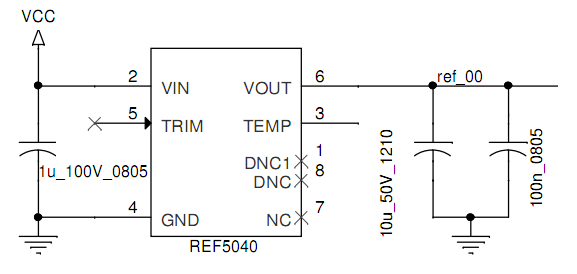Hi there,
We are currently using this IC as a reference voltage for a ADC.
The problem is that while passing the circuit through RF radiated immunity tests the output pin is not stable and we are getting erroneous ADC readings.
This occurs at 450 to 700 Mhz band.
Circuit:
Note that the TRIM pin is open, can this be the cause of this problem?
Regards,
Daniel


